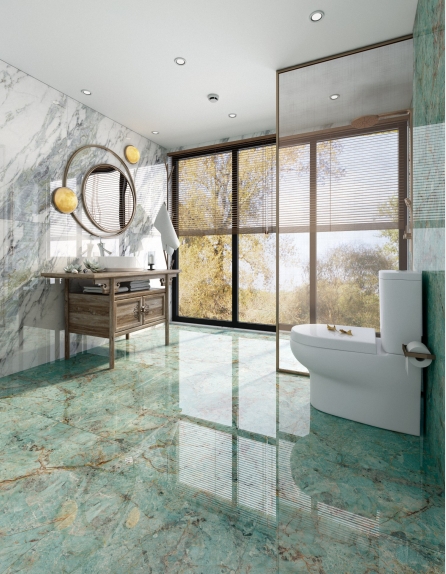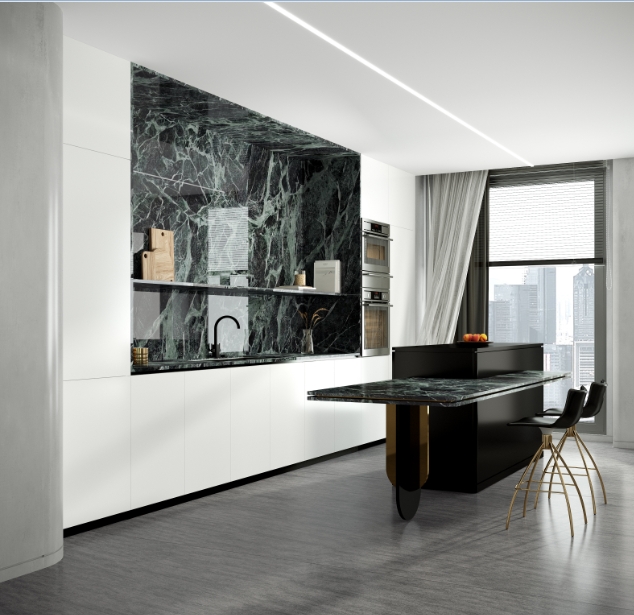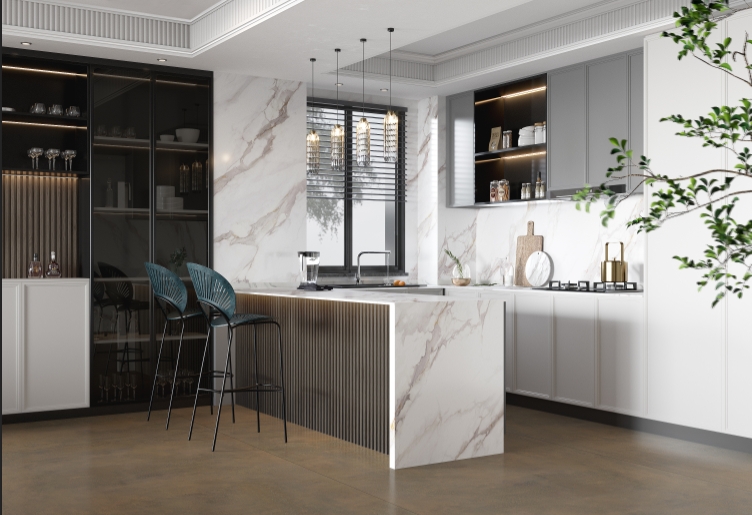Incorporating ceramic tiles in small spaces can be a challenging task, but with the right tips and tricks, it can transform cramped areas into visually appealing and functional spaces.
This article aims to provide objective and impersonal guidance on how to effectively utilize ceramic tiles in small spaces.
The first step is to carefully choose the size and shape of the tiles, considering the dimensions of the space and the overall design aesthetic.
Additionally, selecting the perfect color and pattern can play a crucial role in creating an illusion of spaciousness.
Creative layouts can also maximize space, allowing for an efficient and organized arrangement.
Furthermore, incorporating tile accents can enhance the visual appeal of the space, adding dimension and character.
Lastly, proper maintenance and cleaning techniques are essential for preserving the longevity and beauty of ceramic tiles.
By following these tips and tricks, individuals can successfully incorporate ceramic tiles in small spaces, creating an aesthetically pleasing and functional environment.

The selection of an appropriate size and shape of ceramic tiles is crucial in optimizing the aesthetic appeal and functionality of small spaces, evoking a sense of sophistication and elegance in the audience.
When it comes to small spaces, it is important to choose tiles that will enhance the visual perception of the area. Larger tiles tend to create an illusion of a bigger space, making it appear more expansive and open. On the other hand, smaller tiles can create a textured and intricate pattern, adding depth and visual interest to the room.
Additionally, the shape of the tiles can also play a significant role in the overall design. Rectangular tiles can elongate the space, while square tiles can create a balanced and symmetrical look.
Ultimately, the size and shape of the tiles should be carefully considered to achieve the desired aesthetic effect in small spaces.
When choosing the ideal color and pattern for ceramic tiles in compact areas, it is essential to consider various factors.
First and foremost, the color of the tiles should complement the overall aesthetic of the space. Lighter shades create an illusion of a larger area, while darker tones can add depth and warmth.
Additionally, patterns can play a significant role in enhancing the visual appeal of small spaces. Geometric patterns, for example, can create a sense of movement and dimension, while subtle patterns can add texture without overwhelming the area.
It is crucial to strike a balance between the color and pattern, ensuring that they do not overpower the limited space. Ultimately, the goal is to choose a color and pattern that harmonize with the overall design while making the small space feel more inviting and visually appealing.
To optimize the limited space available, exploring innovative layouts can be an effective strategy. By incorporating creative layouts, small spaces can be visually expanded and made more functional.
Here are some tips to maximize space when incorporating ceramic tiles:
- Diagonal layout: Placing tiles on a diagonal can create the illusion of a larger area.
- Herringbone pattern: This pattern adds visual interest and can make the space appear wider.
- Vertical stripes: Installing tiles in a vertical pattern can give the impression of higher ceilings.
- Mixed sizes: Using a combination of different tile sizes can add depth and dimension to the space.
- Minimal grout lines: Opting for narrow grout lines can make the tiled area look more seamless, creating a sense of continuity.
By considering these creative layouts, small spaces can be transformed into visually appealing and functional areas.
Enhancing the visual appeal of a space can be achieved through the addition of tile accents. Ceramic tiles offer a versatile and stylish option for incorporating accents into small spaces. By strategically placing tiles in key areas, such as backsplashes or borders, one can create visual interest and add a touch of sophistication to the overall design.
The use of contrasting colors or patterns can create a focal point and draw attention to specific areas. Additionally, incorporating different textures or finishes can further enhance the visual appeal of the space.
It is important to consider the overall design scheme and choose tile accents that complement the existing elements. By carefully selecting and placing ceramic tile accents, one can transform a small space into a visually stunning and inviting area.
Maintaining the cleanliness and pristine condition of ceramic tiles is essential in preserving their visual appeal and ensuring their longevity. To keep ceramic tiles looking their best, here are some tips for cleaning and maintenance:
- Regular sweeping or vacuuming: Removing loose dirt and debris on a daily basis prevents them from scratching the surface of the tiles.
- Using a mild detergent: When cleaning ceramic tiles, it is important to avoid abrasive cleaners that can damage the glaze. Instead, opt for a pH-neutral detergent mixed with warm water.
- Gentle scrubbing: For stubborn stains or grime, a soft-bristle brush or sponge can be used to scrub the affected area. Avoid using metal brushes or abrasive scrubbing pads as they can cause scratches.
By following these simple cleaning and maintenance practices, ceramic tiles can retain their beauty and durability for years to come.

Yes, ceramic tiles can be used in outdoor spaces. They are durable, easy to clean, and resistant to moisture and weather conditions. Their versatility and aesthetic appeal make them suitable for various outdoor applications.
There are various types of grout that can be used with ceramic tiles, including sanded grout, unsanded grout, epoxy grout, and furan grout. Each type has its own properties and is suitable for different applications.
Alternative materials, such as vinyl or laminate flooring, can be used instead of ceramic tiles in small spaces. These materials offer durability, easy maintenance, and a wide range of design options, making them suitable for various aesthetic preferences and functional requirements.
Yes, ceramic tiles can be installed on uneven surfaces. However, it is important to properly prepare the surface by leveling it and using a suitable adhesive to ensure the tiles adhere properly and prevent any future damage or instability.
To prevent ceramic tiles from becoming slippery in small spaces, such as bathrooms, it is recommended to choose tiles with a slip-resistant surface. Additionally, using rugs or mats with non-slip backing can provide additional traction and reduce the risk of accidents.

Incorporating ceramic tiles in small spaces requires careful consideration of size, shape, color, and pattern. By selecting the right tiles and utilizing creative layouts, one can maximize the space and enhance its visual appeal.
Additionally, incorporating tile accents can add a touch of uniqueness and style to the small space. Proper maintenance and regular cleaning of ceramic tiles are essential to ensure their longevity and beauty.
With these tips and tricks, small spaces can be transformed into stunning and functional areas.
More information, please contact us.